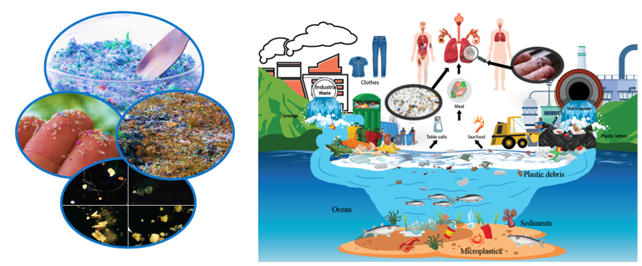Products You May Like
A new study identifies which parts of our airways are getting clogged with microplastics as we inhale about 16.2 bits an hour. That’s a credit card’s worth of microplastic going into our respiratory system a week.
We’re also eating and drinking these plastic particles, as microplastics are now everywhere, including in our veins. They’re in our tea, water, and food, as well as increasing in the air. We can’t avoid them and don’t understand the health impact.
“For the first time, in 2022, studies found microplastics deep in human airways, which raises the concern of serious respiratory health hazards,” says University of Technology Sydney engineer Mohammad Islam, explaining the motivation for their study.
Islam and colleagues from around the world used a computational fluid dynamics model to safely explore how microplastics move around our upper airways under different breathing conditions. This model type has provided effective predictions for other forms of particles for decades.
It revealed that the largest microplastics tested (5.56 microns) tend to get stuck in our upper airways, most likely in the nasal cavity or the back of the throat. The plastic dust’s shape also influences where it’s deposited.

“The complicated and highly asymmetric anatomical shape of the airway and complex flow behavior in the nasal cavity and oropharynx causes the microplastics to deviate from the flow pathline and deposit in those areas,” says Islam.
“The flow speed, particle inertia, and asymmetric anatomy influence the overall deposition and increase the deposition concentration in nasal cavities and the oropharynx area.”
The researchers reported that a faster air flow rate led to lower microplastic deposits overall, regardless of their shape.
Islam and colleagues plan to model how these particles move around our lungs next.
“Millions of tons of these microplastic particles have been found in water, air, and soil,” explains Islam.
“Global microplastic production is surging, and the density of microplastics in the air is increasing significantly.”
These tiny particles are shedding from the degradation of all the plastics we’ve surrounded ourselves with, from big industrial processes to consumer items. One of the most significant sources of these microparticles is the fashion industry, with its escalating production of ever-cheaper synthetic clothing.
While microplastics clearly aren’t immediately toxic, concerns remain about the long-term effects of these tiny pollutants, especially as they accumulate within us.
What’s more, plastic has a knack for attracting potentially harmful hitchhikers, including antibiotic-resistant bacteria, viruses, and toxic molecules like fire retardants and phthalates.
So understanding where exactly these particles are sticking is an essential step towards working out what they’re doing while they’re inside us all.
This research was published in Physics of Fluids.
